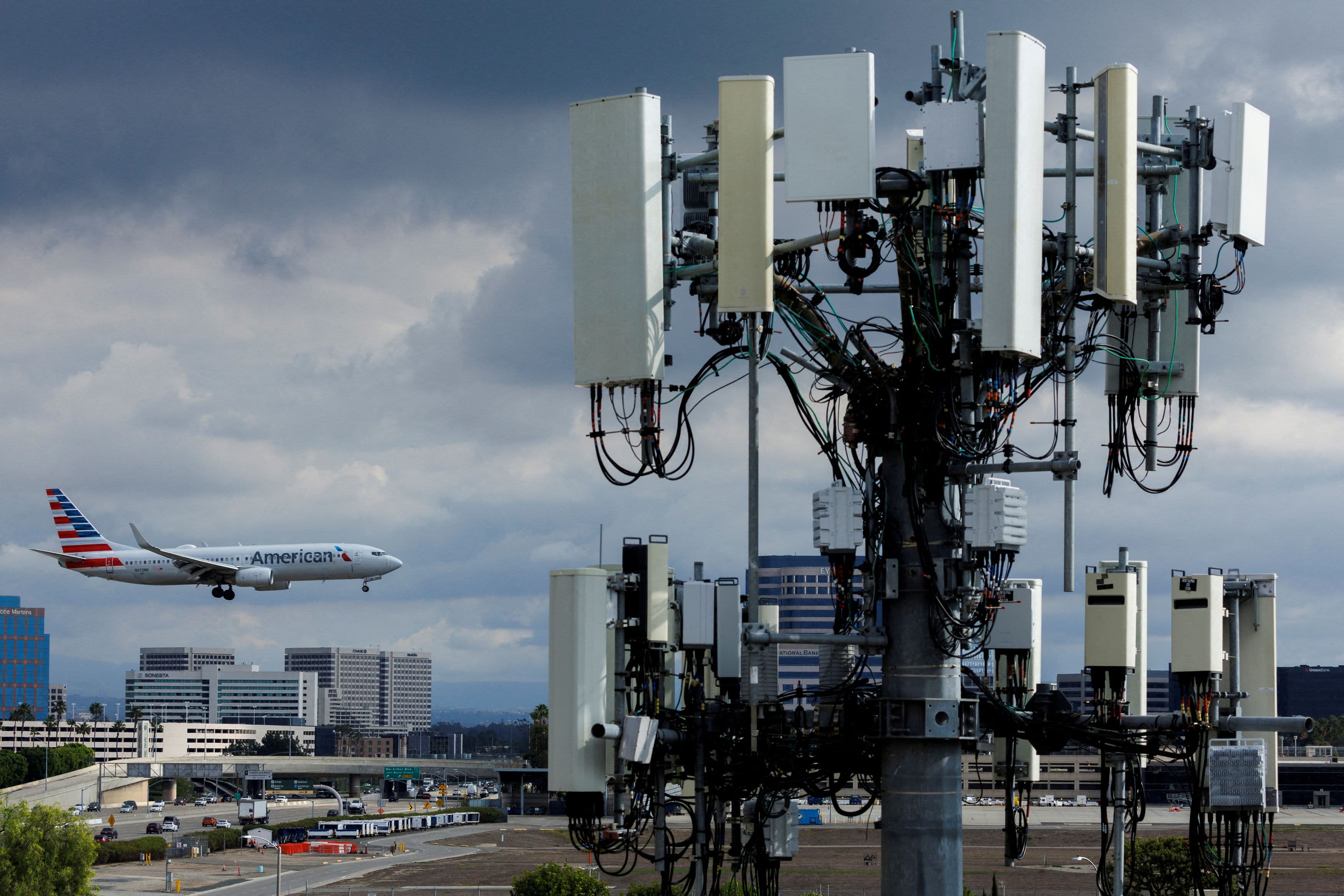
An American Airlines commercial aircraft flies past a cell phone tower as it approaches to land at John Wayne Airport in Santa Ana, California U.S. January 18, 2022.
Mike Blake | Reuters
The Federal Aviation Administration on Thursday cleared more of the U.S. fleet to make low-visibility landings after the launch of new 5G wireless service.
The FAA has warned that it would limit landings in certain low-visibility conditions due to concerns that 5G signals could interfere with crucial aircraft equipment. As winter storms and other adverse weather popped up Thursday, the FAA said it may have to divert some flights.
Eighteen flights in the U.S. were forced to divert on Thursday, according to flight-tracking site FlightAware.
At the center of the issue is aircraft radio altimeters, which tell pilots how far the plane is from the ground. The altimeters use frequencies that sit next to those used for the new 5G service, raising concerns about aircraft receiving inaccurate data.
The new service began on Wednesday after two delays since December. Verizon and AT&T, at the last minute, agreed to temporarily delay the rollout near airports temporarily after airlines warned federal officials that the signals could cause widespread disruptions and “economic calamity.”
“Due to the nationwide expansion of 5G C-band and the potential for radio altimeter interference, [air traffic control] has identified airports and/or geographic regions that may be impacted by meteorological conditions leading to a diverted flight,” the FAA said.
Airports in Boston, Philadelphia, Baltimore and San Francisco were among those affected, it said.
“We simply don’t compromise on safety and when FAA is telling us it is not safe to land, one we don’t have any discretion in that, but two even if we did we wouldn’t do it,” United Airlines CEO Scott Kirby told CNBC’s “Squawk Box” on Thursday.
The FAA by late Wednesday had approved 62% of the U.S. fleet to land in low visibility, up from 45% over the weekend. The agency is planning to approve more as early as Thursday. Approved altimeters are on Boeing 717s, 737s, 747s, 757s, 767s and 777s as well as Airbus A310s, A320s, A321s, A350s and A380s.
That rose to 78% on Thursday and included smaller regional aircraft: Embraer 170 and Embraer 190.
The clearance didn’t come early enough for some flights.
“Weather conditions at some airports led to a small number of flight cancels and diversions this morning as a result of 5G implementation,” SkyWest Airlines spokeswoman Marissa Snow said in a statement, before the FAA’s clearance of Embraer 175 planes. The regional carrier flies for American, United, Delta and Alaska.
“We are hopeful the FAA will provide additional mitigation for the rest of our fleet soon,” she said. “The potential for ongoing operational impact remains until full mitigations can be put into place for all commercial aircraft. As always, we will not compromise safety.”
The first day of 5G service brought few cancellations as airlines also had relatively clear weather. Some international airlines including Japan Airlines and Emirates Airline had canceled some U.S.-bound flights but reversed that decision after the FAA cleared 777 wide-body aircraft to land in low visibility. Those jets are normally used for long-haul international routes.
Correction: The impact of the 5G rollout could lead to a traffic backup at the airport in Reno, Nevada. An earlier version misstated which state the Reno-Tahoe International Airport is in.



